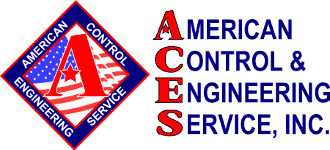THE MYSTERY
A municipal water customer was having an issue with the exhaust fan on one of their lift stations: When they flipped the switch to start the fan manually, it tripped two breakers. They called an ACES Control Systems Inspector (CSI) to the scene to determine why.
THE CLUES
When the CSI traced out the wiring for the 1960s-era lift station, he discovered that the wiring was set up to use a standard wall outlet as a quick disconnect. This is unusual today, but not at all in 1969 when this lift station was commissioned.
On this particular outlet, a switch was being run through the top half, and a humidifier was being powered by the bottom half.
When the CSI used his ohmmeter to measure the resistance in the circuit, it was showing a short to ground in places where he knew it shouldn’t be receiving one.
After questioning the maintenance staff he uncovered the fact that the fan was working fine until they did some work on a check valve directly above the outlet in question. During that operation water dribbled under the switch plate, and when they powered up, the outlet shorted out.
Maintenance replaced the old outlet with a standard outlet — but the fan continued to short out.
Was there something about the standard outlet that caused the fan to short out?
THE PERP
When the CSI examined the standard switch plate he noticed that, since the top half was used for control, both halves had their own independent power supply and independent neutral, or return.
He also uncovered a brass jumper connecting the two halves — standard on a wall outlet so they can be daisy chained together.
But the electrician who installed the new, standard outlet didn’t realize that the jumper needed to be removed in this case, because when the fan switch was turned on it transferred power to the neutral side, and the bottom half of the plug was tied straight to neutral, which is bonded to ground so there was a direct short in the top circuit breaker.
THE SOLUTION
The CSI clipped the two brass jumpers, which separated the two plugs from one another and the short to ground disappeared.
This is a good example of complications that arise when ongoing maintenance introduces foreign bodies, or necessary repairs introduce new variables, such as a brass jumper.
If you have complications in new or legacy equipment, ACES has plenty of experience troubleshooting both. We can help — give us a call.
